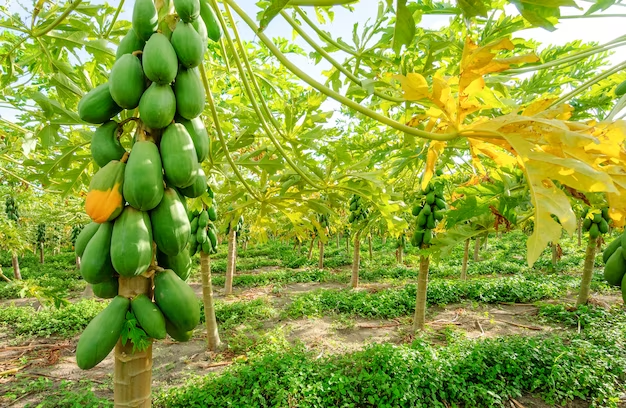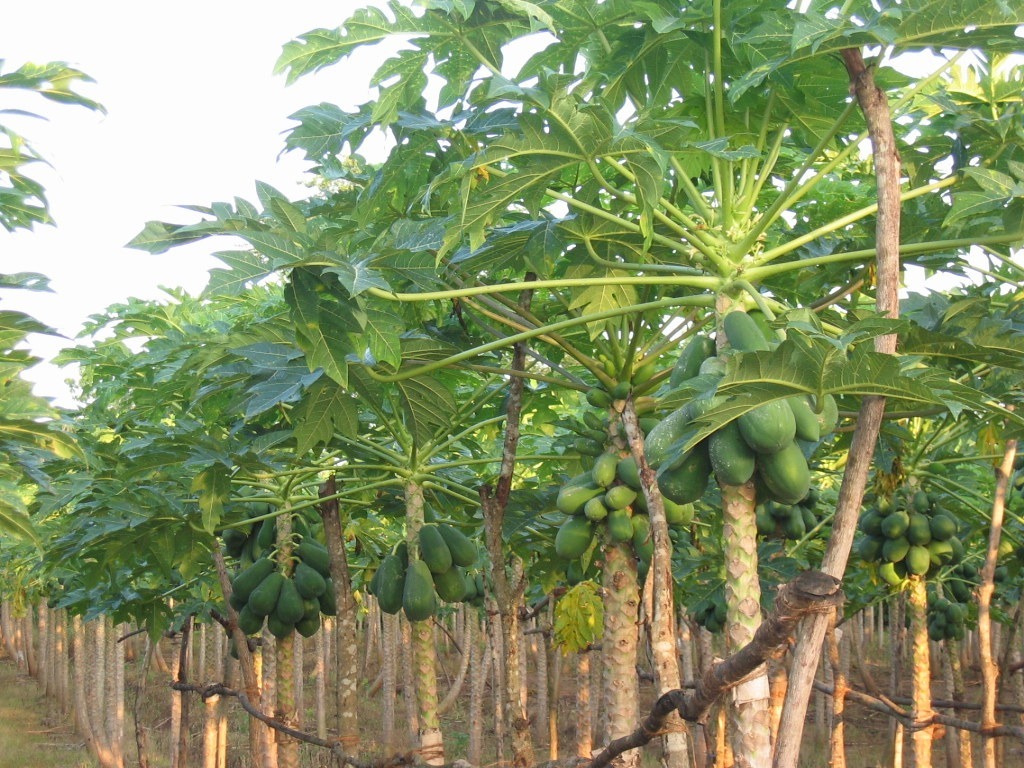Papaya cultivation guidance

Papaya, a tropical delicacy bursting with taste and nutrients, is highly desired by numerous gardeners. Though commonly linked with areas blessed with perpetual warmth, it’s entirely feasible to cultivate papaya at home, even in cooler climates, by opting for pot planting. This detailed guide will reveal the keys to achieving a plentiful papaya harvest, directly in your backyard.

Growing Papaya at Home in Pots: A Comprehensive Guide
Embarking on the journey to a bountiful papaya harvest involves careful selection of high-quality seeds and meticulous attention to planting methods, space management, and pest and disease control. Here’s a detailed walkthrough:
1. Selecting the Perfect Papaya Seeds
Begin by acquiring seeds from a ripe papaya. Follow these steps:
– Choose a Ripe Papaya: Opt for a fully ripe fruit with mature, viable seeds.
– Seed Extraction: Cut the papaya, scoop out the seeds, rinse them to remove pulp, and air dry for a day or two.
2. Germinating Papaya Seeds
Successful germination sets the stage for healthy papaya growth:
– The Moist Paper Towel Method: Place seeds evenly on a damp paper towel, fold, and enclose in a plastic ziplock bag.
– Provide Optimal Warmth: Maintain a temperature of 75-85°F (24-29°C) with indirect sunlight.
– Monitor Germination: Check for sprouted seeds with small roots after 1-2 weeks.
3. Planting Papaya in Pots
Transition your germinated seeds into pots for optimal growth:
– Select a Suitable Pot: Choose a large pot with excellent drainage, ideally 10-15 gallons in size.
– Prepare the Soil: Use well-draining potting mix with a pH of 6.0-6.5, enriched with compost.
– Transplant the Seedlings: Carefully transfer seedlings into prepared pots, ensuring the root ball is level with the soil.
– Spacing: Allow at least 10 feet between multiple papaya plants to accommodate their mature size.
4. Care Tips for Your Papaya Plant
Ensure your papaya thrives with these care tips:
– Sunlight: Provide a minimum of 6 hours of direct sunlight daily.
– Watering: Maintain consistently moist soil, avoiding waterlogging. Water deeply when the top inch of soil is dry.
– Fertilization: Feed regularly with a balanced fertilizer or fruit tree fertilizer every 2-4 weeks during the growing season.
– Pruning: Trim dead or damaged leaves and excess growth regularly to promote a well-structured tree.
– Pest and Disease Control: Monitor for common pests like aphids, mealybugs, and fruit flies. Utilize organic pesticides as needed.
– Support: Provide support as the plant grows to prevent toppling under the weight of fruit.
5. Harvesting Your Papayas
Enjoy the fruits of your labor after 6-9 months:
– Harvest when the papayas reach desired ripeness, typically indicated by yellow or orange coloration.
– Gently twist fruit from the stem for easy removal.
Growing papayas at home in pots is immensely rewarding. With proper care, even urban gardeners can enjoy delicious, homegrown papayas. Keep in mind the relatively short lifespan of papaya plants, typically 4-6 years, and be prepared to restart the process once productivity declines. Happy gardening!

Share via:
